Finding out cool stuff about leopard sharks can be hard because there’s so much information out there. Without a simple guide, figuring out fun facts about leopard sharks can feel like a puzzle, and it’s tough to get a clear picture of what makes them special.
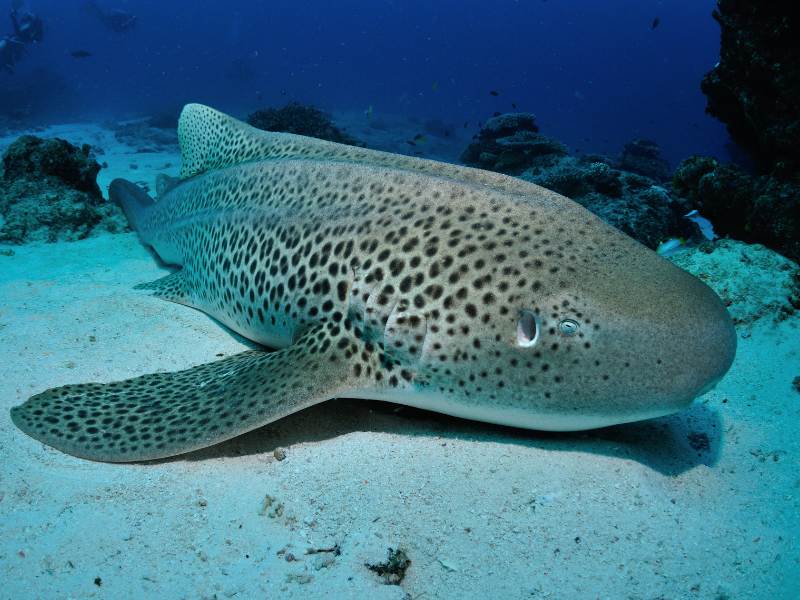
This blog has “10 Interesting Facts About Leopard Sharks” all ready for you! By the end, you’ll have many cool facts that make understanding these awesome sharks super easy. Let’s dive in and discover the amazing things that make leopard sharks so unique!
Appearance and Physical Characteristics
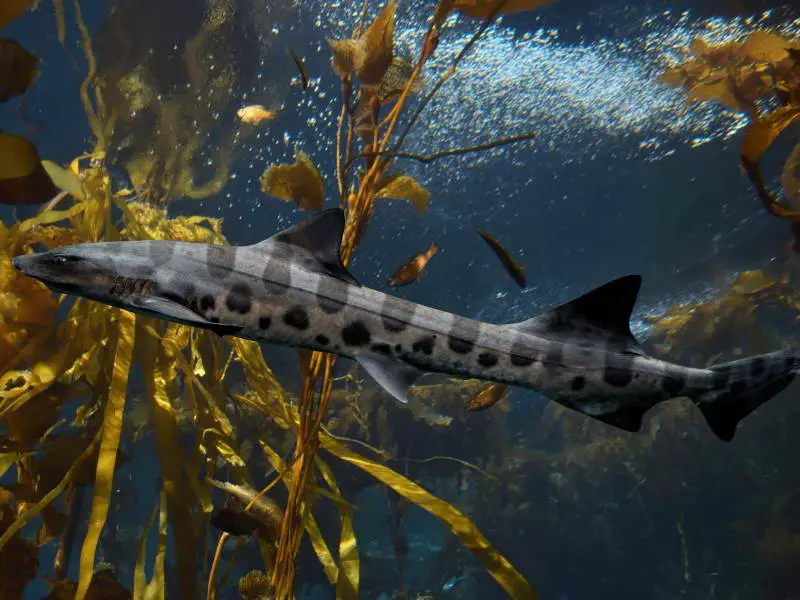
The leopard shark, scientifically known as Triakis semifasciata, gets its name from its attractive, spotted gray or brown coloring. Its spots help it blend into ocean sediments for camouflage. It has a slender, elongated body and narrow, pointed snout with small eyes set high on its head.
As leopard sharks belong to the carcharhiniform order of sharks, they lack an anal fin and have two dorsal fins. Their pectoral fins are moderately large and rounded while their caudal fins are asymmetrical. Their skin feels sandpaper-like due to dermal denticles called placoid scales.
Size Range and Gender Differences
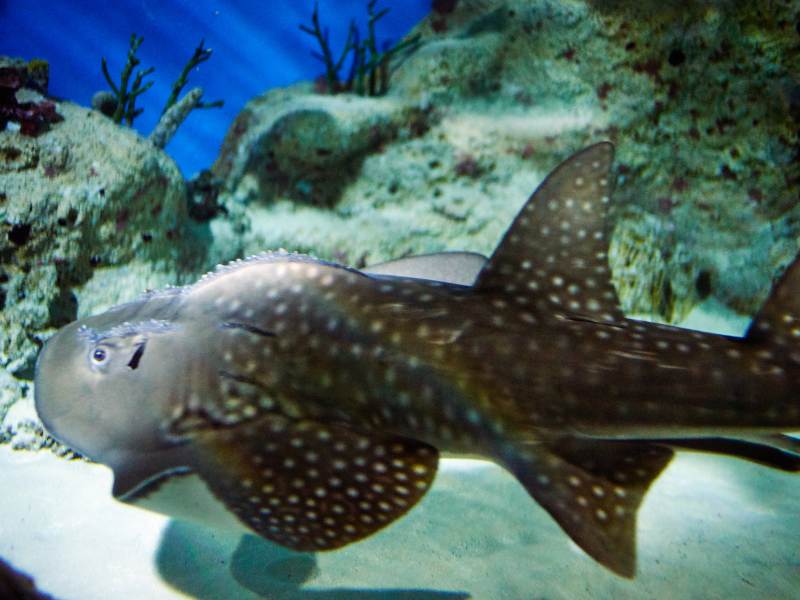
Leopard sharks have an average length of 4-7 feet but can grow up to 8 feet long in some cases. Females tend to be slightly larger than males. Newborns measure around 10-13 inches at birth.
These small benthic sharks exhibit significant size variation based on geography. For example, on average, leopard sharks found off California’s coast reach up to 6 feet long while those in Hawaii rarely exceed 4 feet. Females also show delayed maturity, taking 8-10 years to sexually mature compared to males that mature within 5-6 years.
Dietary Habits and Food Preferences
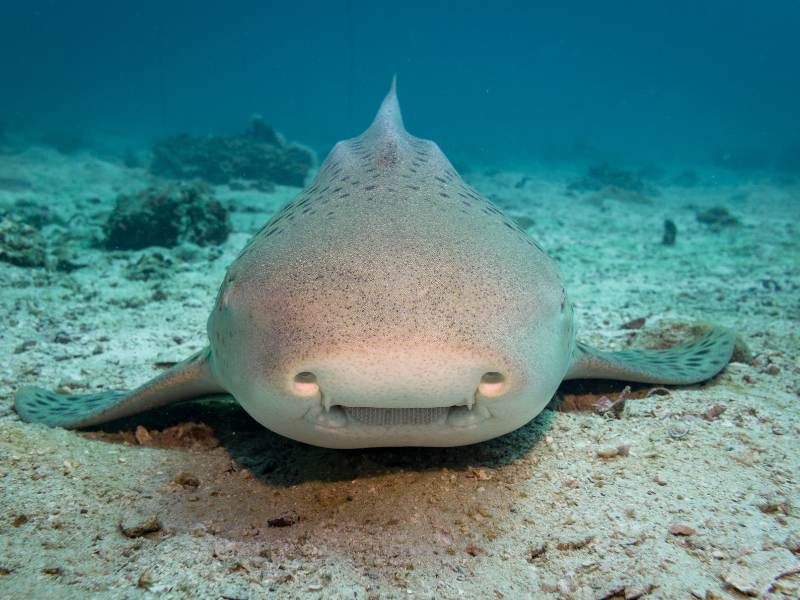
Being active nocturnal hunters, leopard sharks have a diverse diet comprising small fishes, crabs, shrimp, octopuses, and squid near the seabed. (facts about leopard sharks) They utilize their pointed teeth and keen sense of smell to locate and capture buried or hidden prey in sediments.
Their dietary analysis has revealed a clear preference for crustaceans over other items. Crabs alone can make up 40-60% of their stomach contents, showing their effectiveness at digging out hidden crab shells. Other regular food items include mollusks, worms, small sharks, rays, and smaller bony fishes.
Behavioral Patterns: Nocturnal Behavior
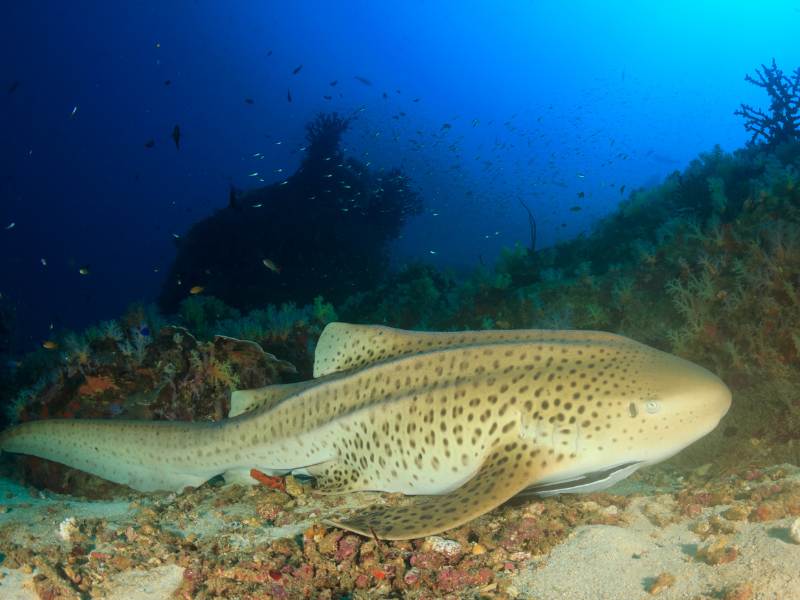
Leopard sharks are primarily nocturnal, becoming highly active after dusk to hunt for food under cover of darkness. During the day, they rest motionless on the seabed, perfectly camouflaged due to their spots. This behavior helps them ambush unsuspecting prey and avoid larger predators themselves.
They spend daylight hours partially buried in sandy or muddy substrates, often lying on their sides. Some scientific studies have observed that their heart rate drops significantly and metabolic functions slow down while resting. Come nightfall, they vigorously swim above and around the seafloor searching for meals.
Unique Breathing Adaptation

Despite being active bottom-dwellers, leopard sharks have evolved a unique breathing adaptation. Unlike other species that need to swim to get water flowing across their gills, these sharks can draw water into their mouths by poking their snouts above the sediment.
With a gentle buccal pumping motion, they move water through their spiraled gill slits to oxygenate their blood even when partially or completely motionless. This helps them breathe easily without losing their stealthy camouflage during daytime resting periods on the ocean floor.
Reproduction and Birthing Process
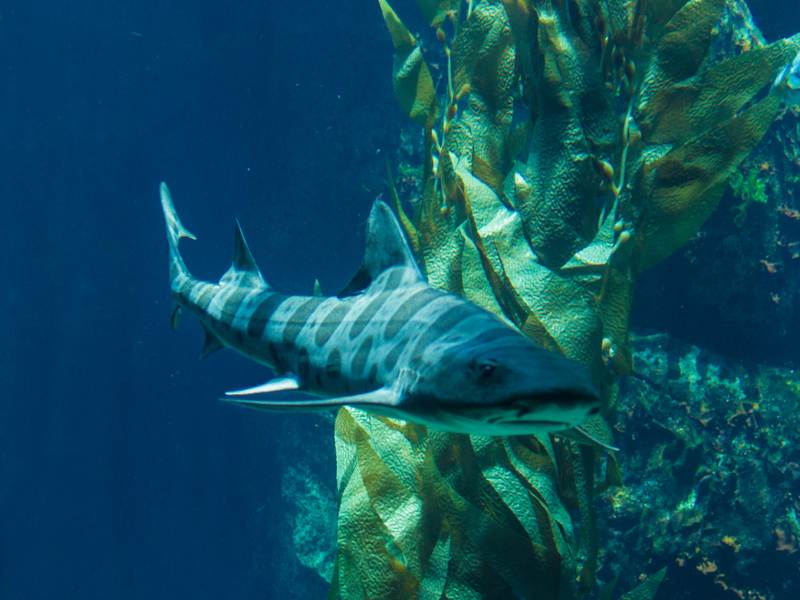
Leopard sharks are viviparous, giving birth to live young after a gestation period of 9-12 months. Mating occurs in spring and early summer when the water is warmest. Females store sperm from multiple mates until internal fertilization in their oviducts.
Come next spring, they migrate inshore to shallower coastal nurseries like bays, estuaries, or wetlands to give birth. Females produce small litters of 1-13 pups averaging 7 inches long. The young immediately disperse postpartum but tend to stay in safer coastal nurseries for several years until adulthood.
Slow Growth Rate and Maturity
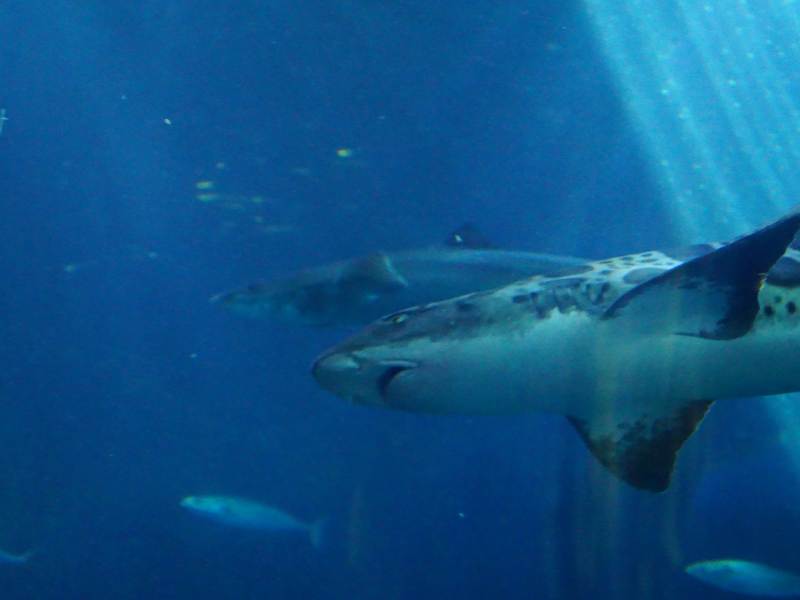
Being low on the food chain, leopard sharks have evolved a slow growth strategy. They have indeterminate growth, meaning they continue growing throughout their lifetime but at a decreasing rate with age.
Males reach sexual maturity at around 5-6 years when 3-4 feet long but may live up to 15-20 years. Females delay maturity until 8-10 years of age when 4-5 feet long and have a maximum lifespan of 25 years. This prolonged juvenile phase enhances survival by avoiding early reproduction.
Habitat Preferences and Environmental Adaptations
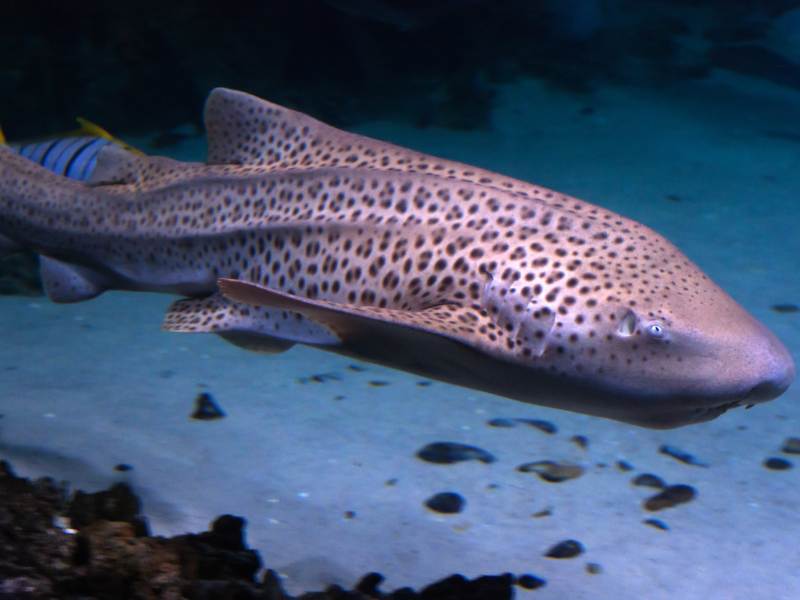
Native to the eastern Pacific ranging from Alaska to Mexico’s Gulf of California, leopard sharks inhabit temperate shallow coastal waters from the surf zone to depths of 330 feet. (habitat facts) They prefer sheltered bays, estuaries, lagoons, and areas near river mouths with mud or sand bottoms.
Their camouflage, nocturnal habits, and unique breathing ability help them thrive undisturbed in these habitats. Some migrate seasonally while others are residents. They tolerate a wide range of temperatures from 50-70°F and salinity between 24-35 ppt.
Also Read: La Jolla Leopard Sharks Adventure
Dentition: Three-Pointed Teeth
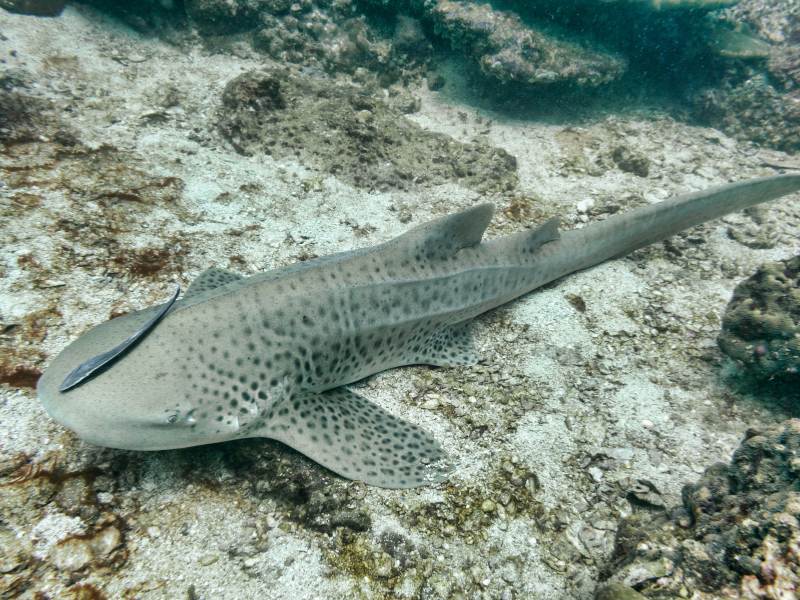
Leopard sharks have several rows of small, finely serrated teeth designed for grasping and tearing rather than chewing. Their teeth are differentiated and arranged heterodontly – incisors at the front for shearing and triangular cuspids further back for gripping.
Each individual tooth has three sharp points; one main cusp with two lateral cusplets. This unique tricuspid dentition interlocks perfectly when the jaws close to hold struggling prey securely until swallowed or torn into pieces. They gradually shed and replace teeth throughout their life cycles.
Human Interaction and Harmlessness
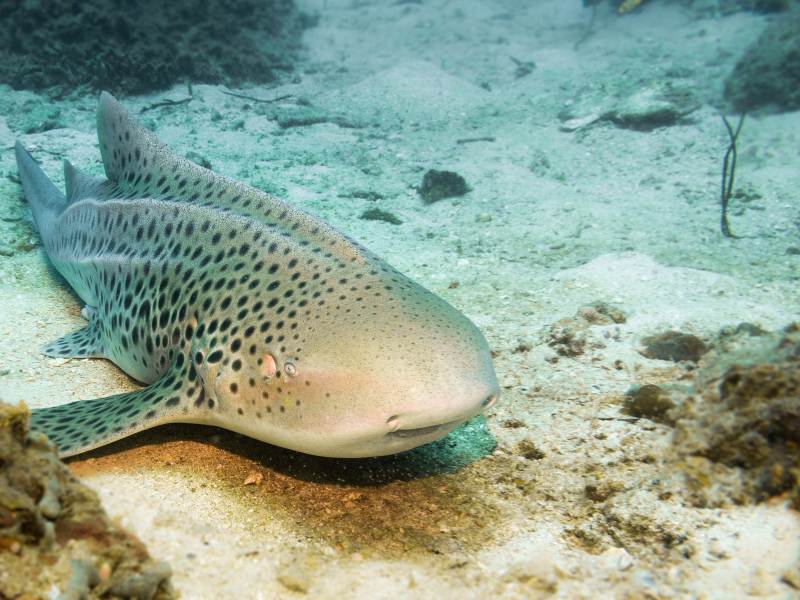
Being small bottom-dwellers usually found in shallow coastal waters, leopard sharks rarely encounter divers and swimmers. They are generally not aggressive towards humans unless provoked or startled. However, as with any wild animal, it’s advisable not to handle them.
While their serrated teeth may cause small cuts if bitten, there are no documented fatal attacks on people attributed to this species. Leopard sharks play an important role in maintaining a balance of marine ecosystems by preying on smaller fish, mollusks, and crustaceans. Although their global population trend is unknown, they are currently not an endangered species.
Conclusion
In conclusion, leopard sharks demonstrate several fascinating adaptations for their coastal benthic lifestyle through camouflage, nocturnal habits, unique breathing, and placoid scales. Their spots, tooth morphology, slow growth, and reproductive patterns are specialized for survival in temperate shallow waters of the eastern Pacific. Further studies can provide valuable insights into better conservation of these non-threatening yet ecologically important sharks.
